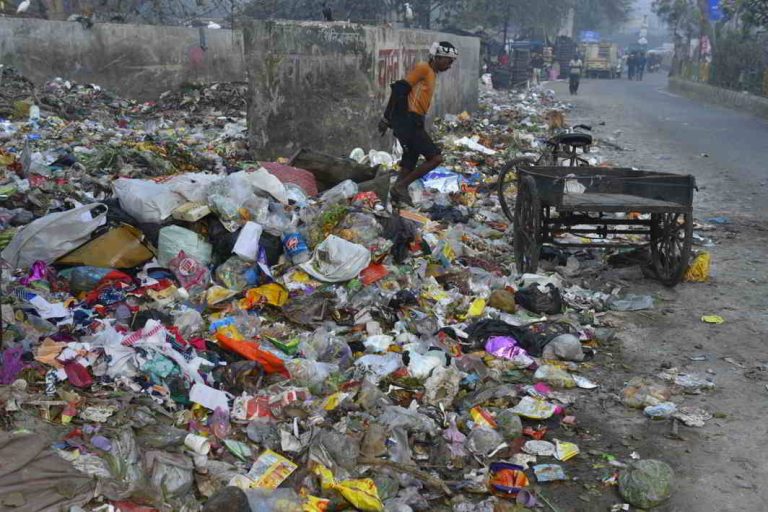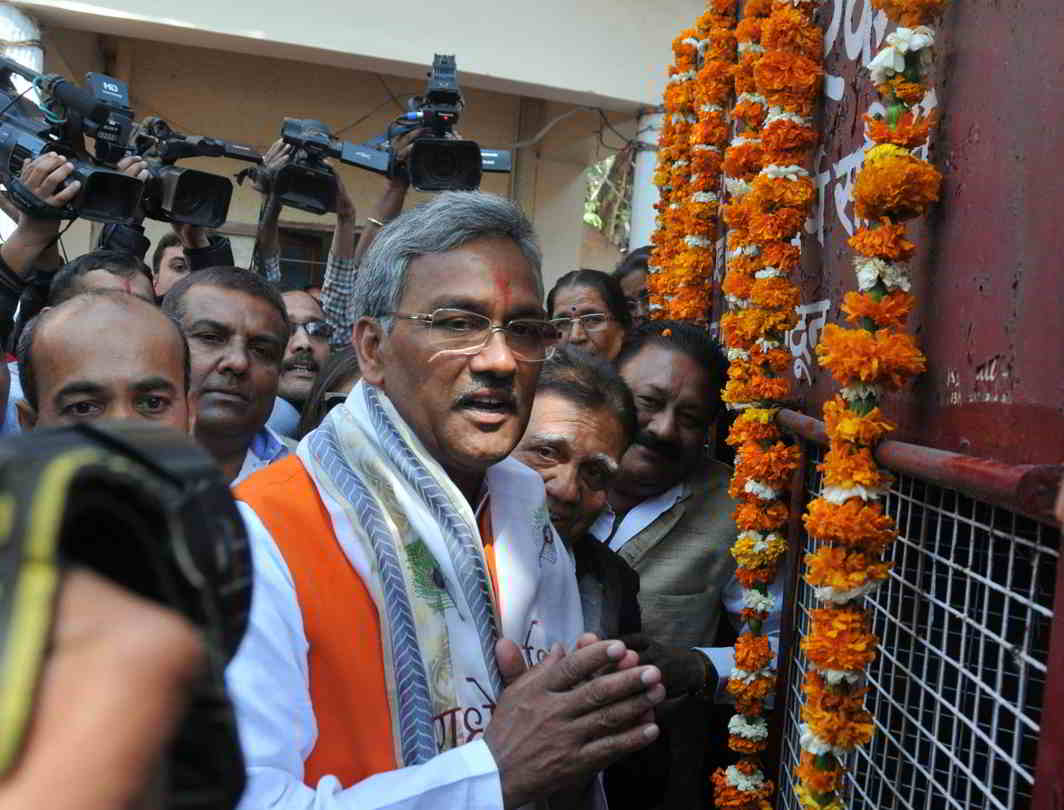
A landmark judgement has issued detailed guidelines for municipal waste management which could serve as a template that the entire country would do well to follow
~By Ajith Pillai
Solid waste management is a major challenge that urban India is confronted with. And the problem will only amplify with increased urbanisation. According to estimates of the Union Urban Deve-lopment Ministry, by 2050, half of India’s population will be concentrated in cities and towns. The 2011 Census revealed that as much as 31 percent of the country’s 1.21 billion population resided in cities.
This shift from the rural to the urban settlements brings with it a host of problems. The biggest challenge is generation of solid waste, which includes garbage, sludge, sewage, discarded materials including solid, liquid and containerised gaseous material, and semi-solid refuse. These come from dwellings, community activities and industrial and commercial establishments.
While there are laws which address the need to manage solid waste, including Municipal Solid Waste (MSW) Management & Handling [M&H]) Rules, 2000, later renamed as Solid Waste Management (SWM) Rules, 2016, the problem has not been effectively addressed. It is in this context that the March 16, 2017, judgement of the Uttarakhand High Court is being seen as a landmark one. Here, the two-judge bench issued detailed guidelines on solid waste management for the Uttarakhand government. This could serve as a template for other states to follow.
According to an official of the Union Urban Development Ministry, the Court has set deadlines for the state government to act and the newly-elected BJP government in Uttarakhand will have little option but to abide by it. The official said: “I don’t think that the state will even consider going in appeal against the High Court judgement. Much of what the Court has noted is already there in central government rules and in the Prime Minister’s Swachh Bharat programme. It is the implementation of the rules and the timeline that the Court has underlined that makes it a significant order.”
” font_container=”tag:p|font_size:20px|text_align:left|color:%23000000″ google_fonts=”font_family:Open%20Sans%3A300%2C300italic%2Cregular%2Citalic%2C600%2C600italic%2C700%2C700italic%2C800%2C800italic|font_style:700%20bold%20regular%3A700%3Anormal”]
Judges Rajiv Sharma and Sudhanshu Dhulia of the Uttarakhand High Court passed the order while disposing off a PIL filed by the Sai Nath Seva Mandal in 2012. The PIL had raised concerns over the municipal waste generated in Kashipur town (Udham Singh Nagar district) being dumped into the Dhela river near the Sai Temple. The Court first addressed the specific issues raised in the PIL. It later enlarged the scope of the writ petition through its April 27, 2016, order by directing magistrates of all 13 districts in the state to “provide prompt information in regard to the steps being taken and progress made in the matter for implementation of Waste Disposal Management Rules” drawn up by the central government in 2000 and revised in 2016.

After receiving feedback from the districts, the Court was constrained to observe that “nothing concrete has been undertaken by the state agencies including the Panchayati Raj institutions. The garbage is thrown all over the public places. The garbage is neither segregated nor stored as per the provisions of these Rules at the source…. What emerges from the affidavits filed by the District Magistrates is that no scientific method has been evolved, till date, for disposal of the municipal waste. Shockingly, the urban waste is also being dumped in the forest land. A number of local bodies have no land available with them for landfill trenching ground…. It is thus, evident that in most of the local bodies, the land is not available for scientific disposal of the municipal waste”.
Delhi tops the list
Most of the statistics relating to the volume of municipal solid waste (MSW) generated are based on a Central Pollution Control Board (CPCB) study conducted in 2004-05. From it, a figure of 0.4 kg per capita per day of MSW was arrived at.
Since then, various estimates have been made. The 2009 CAG report on waste management estimated that urban India produced 48 million tonnes of MSW annually. The Department of Economic Affairs estimated 58 million tonnes for the same year. The CPCB report for 2012 cited 47 million tonnes. In 2014, the Planning Commission put its estimate at 62 million tonnes. And in 2016, the CPCB estimated the annual MSW generated at 52 million tonnes.
But what is worrying is the CPCB estimate that only 23 percent of the waste generated is processed or taken to landfills or treated. According to its data, six major cities (Delhi, Mumbai, Chennai, Kolkata, Hyderabad and Bangalore) are responsible for 10 million tonnes of garbage a year. Of these, Delhi tops the list with 3.3 million tonnes.
Experts say the landfill sites provided for cities do not have effective waste recycling systems and waste is often burnt, releasing toxic gases into the air. Moreover, the landfill sites are overflowing. Delhi has only 164 acres of landfills when it requires over 640 acres going by CPCB estimates.
The situation is indeed alarming and calls for urgent action.
The action plan for municipal solid waste management drawn up by the Uttarakhand government in 2015 does recognise the problem. It pointed out that the state was generating upwards of 3,000 metric tonnes of solid waste every day, of which only 40 percent was collected but not disposed scientifically. Virtually all the waste was dumped in water bodies, burnt or buried illegally in vacant land. The report estimated that by 2040, the quantum of waste generated in the state would touch 9,000 tonnes a day and underlined the need to initiate action with urgency.
While ruling in favour of the petition, the judges made this significant observation: “Every citizen has a legitimate expectation and right to sue the elected representatives, officers/officials of the Municipal Corporation, Municipalities and Panchayati Raj Institutions, individually and by way of collective action claiming damages/compensation on the principle of accountability in case these officers remain remiss in discharge of their statutory duties cast upon them by the Municipalities Act, Municipal Corporation Act and Panchayati Raj Act.”
The mandatory guidelines drawn up by the Court pay meticulous attention to details. Here are a few significant pointers:
- Public premises like parks, streets etc. shall be “surface cleaned” daily by concerned authorities—municipal corporations, nagar panchayats, panchayati raj institutions
- Officials of these organisations/institutions shall ensure that no garbage is deposited in any street or public place
- Workers cleaning the streets or removing garbage, including medical waste, should be provided proper uniforms and protective gear
- The state government should decide on proposals sent by municipal bodies for managing solid waste within four weeks (of the court order)
- The nagar nigams of Dehradun and Haridwar are directed to complete the tender process relating to existing solid waste management schemes within eight weeks and implement them
- Principal secretary, urban development, Uttarakhand, is directed to prepare the state policy and strategy on waste management after discussion with stakeholders within three months. Land must be allocated to local bodies for setting up processing and disposal facilities for solid waste
- The town planning department must provide a separate place for segregation, storage and decentralised processing of solid waste in the development plan for group housing or commercial, institutional or other non-residential facility “exceeding 200 dwellings”
- All local bodies, including panchayats, must ensure door-to-door collection of segregated solid waste from households, informal settlements, commercial and non-residential institutions
- There shall be a direction to the public not to “litter, throw or dispose of any waste such as paper, water bottles, liquor bottles, soft drink cans, wrappers etc., or burn or bury waste on streets, public spaces, drains, water bodies and to segregate the waste at source”. Heavy fines must be considered on those who violate laws
- Local authorities are directed to set up material recovery facilities with sufficient space for sorting of recyclable materials. Hazardous domestic waste must be deposited and dealt with separately
- All local bodies are directed to construct, operate and maintain sanitary refills as per Schedule-1 of the Rules of 2016
- A public awareness drive is called for. There shall be a direction to local authorities not to dump garbage in rivers, streams and forest land. There shall also be a directive to all municipal authorities to ensure there is no mixing of bio-medical waste with other municipal solid waste
- Magistrates must be appointed within six months for ensuring compliance of the provisions of various laws and to try offences relating to littering, sanitation and public health
. . .no scientific method has been evolved, till date, for disposal of the municipal waste. Shockingly, the urban waste is also being dumped in the forest land.
—Uttarakhand High Court judgement
Justices Sharma and Dhulia, while drawing up the guidelines, drew attention to a Supreme court order of 1996 (Dr B.L. Wadhera v. Union of India & others) which said that citizens have a “constitutional as well as a statutory right to live in a clean city. The authorities concerned have a mandatory duty to collect and dispose of the garbage/ waste generated from various sources in the city. Non-availability of funds, inadequacy or inefficiency of staff, insufficiency of machinery etc. cannot be pleaded as grounds for non-performance of the statutory obligations”.
Copies of the Uttarakhand High Court judgement have been sent to the chief secretary, secretaries of urban development and rural development, the Uttarakhand Pollution Control Board and the Comptroller Auditor General of India “for implementation of the direction in letter and spirit”. It will do Uttarakhand, a popular religious and tourist destination, a world of good if the order is complied with.

